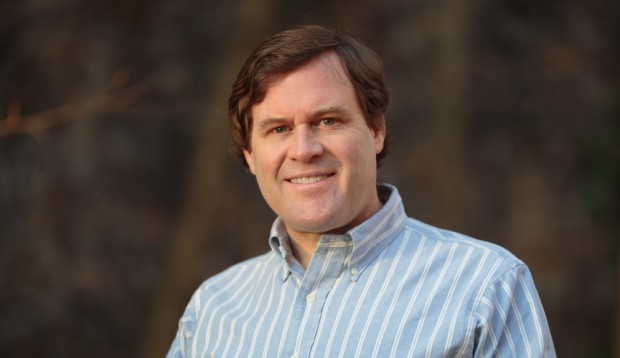
On September 9, 2009, my sporadic photojournalism suddenly became as serious as it gets in the technology news business: I had to shoot a Steve Jobs keynote speech.
I work for CNET News, where a “Jobsnote” is a harrowing experience. Live coverage means reporters write and photographers write and shoot as the event progresses. Stupendously high reader interest can flatten even major Web sites, so there’s immense pressure to deliver. Because our regular photographer was out that day, CNET’s editors asked me to fill in for the event, at which Jobs returned to the stage looking skeletal after a surprise liver transplant.
For a full-time photojournalist, it wasn’t so awful: the lighting was reasonable, a dark background made for easy autofocus, and nearly every moment during an Apple product launch is photogenic. But I was a part-timer, so I was relieved when my photos turned out well enough.
For anyone who’s curious about my news photography job, I cover three topics here: The event details that freak me out, the gear I carry, and the wish list I fantasize about. Many thanks to Kelby Media for lending me Scott’s soapbox.
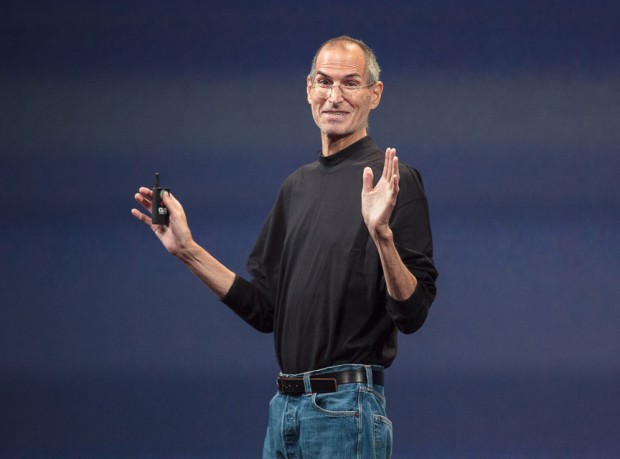
Apple CEO Steve Jobs speaking in 2009. This was shot at 1/200 sec., f4, ISO 6400 with a Canon 5D Mark II and EF 70-200mm f/4L IS
The Jobs speech was a trial-by-fire introduction to today’s tech photojournalism, a specialty that’s changing as fast as the technology it uses. Jack-of-all-trades journalists have extra value now that the walls between photojournalists and reporters are coming down. There are several reasons for the change: cameras are getting easier to use, digital workflow wiped out many technical hurdles, readers like photo galleries, and shrinking news budgets mean dedicated photographers are scarce. If a reporter can’t shoot an event, that can mean the news piece has no photos.
I got lucky because I live in both worlds. In most of my 20 years in journalism, photography was a useful but largely optional skill. In my earliest days I shot “wild art” — photos to enliven a gray page of newspaper text on a slow news day. My first digital SLR was a Canon Rebel XT in 2005, followed by a few nice lenses, Adobe Lightroom, a Canon 5D Mark II, and now a 5D3.
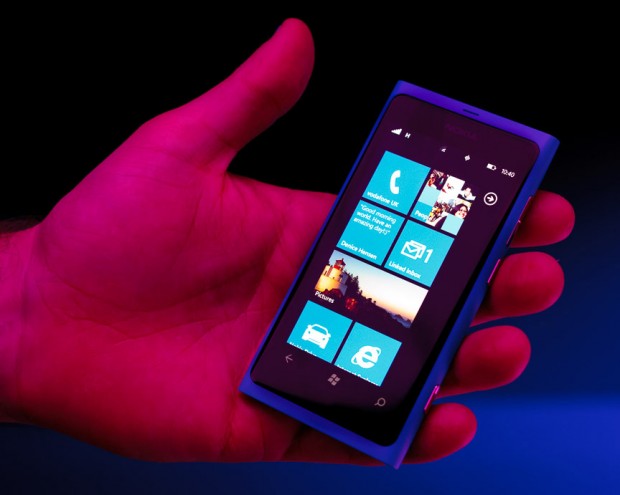
Taking product photos at dark launch events is difficult, but every now and again I get lucky with the weird lighting. It doesn’t look so good on faces
As I got more serious, photography became more important to my job, and now I consider photography essential to just about any event out of the office. I shoot press conferences, conference speeches, interviewee portraits, new products, and news stories like queueing Apple fans in Paris or the Large Hadron Collider particle accelerator near Geneva.
To start, here are the concerns I face now:
Where’s The Network?
In days of yore, reporters would gather information, package it up, then publish or broadcast their reports. Nowadays at tech events, live blogging is the order of the day, which means you need a network. Unfortunately, at the big events with hundreds of smartphone-toting techies, the Wi-Fi almost always bombs shortly before the event begins. Occasionally an enlightened show organizer will assure coverage of its event by lacing the press seats with Ethernet cables, a gloriously stress-relieving luxury. More often, the only choice is a dongle for tapping into the mobile-phone network. For really important shows, it’s best to bring more than one. Even then sometimes the only option is a mad dash for the press room after the event.
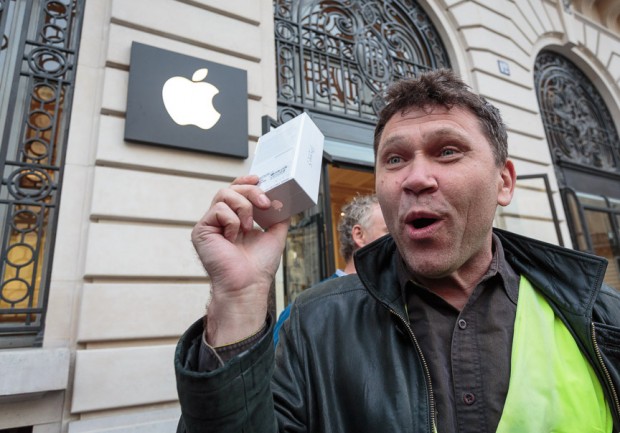
A news photographer’s blessing: People are emotional about Apple products. This is an early customer of an iPhone 5 in Paris
Where’s The Power?
Editing photos hammers laptop batteries, and every milliamp-hour is precious during 18-hour trade shows. I sometimes have to work while waiting in a queue before an event begins or while riding public transit to a conference center. I take every chance I get to juice up.
Where Do I Sit?
In a conference hall, I need to be near the speakers, without obstructing teleprompters, but I also want to get straight-on shots of the presentation slides. Being on an aisle gives me flexibility to get up and walk, but if I’m writing, too, I’ll mostly be parked underneath a laptop. Outlets are usually on the edges of the halls, though sometimes you can poach power from an overhead projector or the sound guy. A table with Ethernet, power strips trumps all other considerations, but often there are more press personnel than seats available.
The worst location dilemma came at Mobile World Congress in February when I had to cover Google Executive Chairman Eric Schmidt. Show organizers let reporters sit in the auditorium but quarantined photographers behind the back row. Apparently it was inconceivable one person would be both both writer and shooter. I opted for sitting in the audience to write — but then I pulled my camera out of my pack, snapped a dozen frames, made sure there was something usable, then stashed the camera again. In other words, I lied to get into the audience seating. That’ll be our little secret, OK?
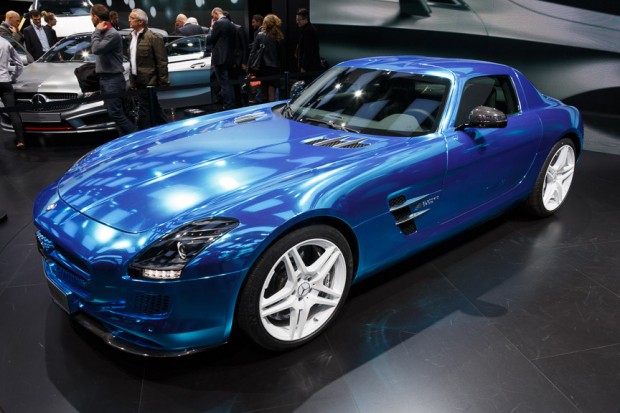
The auto industry learned decades ago that blazing lights means products look better. This Mercedes was at the 2012 Paris Motor Show
Now, the gear. I’ve refined my on-the-road gear to this selection:
Canon 5D Mark III
If I were starting fresh, I’d take a serious look at Nikon, but I’ve got lens lock-in and am reasonably happy with Canon. This camera body is rugged, has vastly superior autofocus compared to its predecessor, shoots well in dim lighting, and has a silent mode that’s terrific for unobtrusive shooting. The SD Card support is terrific, too, for occasions when I’m swapping cards. I don’t do a lot of video, but it delivers the goods. Also, my personal photography inclines toward landscape and architecture, where the 5D3 is superb. Full-time photogs will carry another camera body so they don’t have to switch lenses, but I don’t have the budget or backpack for that.
Canon EF 70-200mm f/4L IS
This is my primary lens. Because I shoot mostly for publication on the Web, I have pixels to burn, so I can crop my photos instead of carrying a $7,000 supertelephoto. I love my Canon EF 70-200mm f/4L IS, which is sharp, durable, and relatively small. However, I must confess that a Sigma’s 70-200mm F2.8 EX DG OS HSM I’ve been testing has stolen my affections. It’s bulkier and heavier, but the image stabilization works; it’s sharp; that extra stop helps tremendously; and the shallower depth of field is great for portraiture.
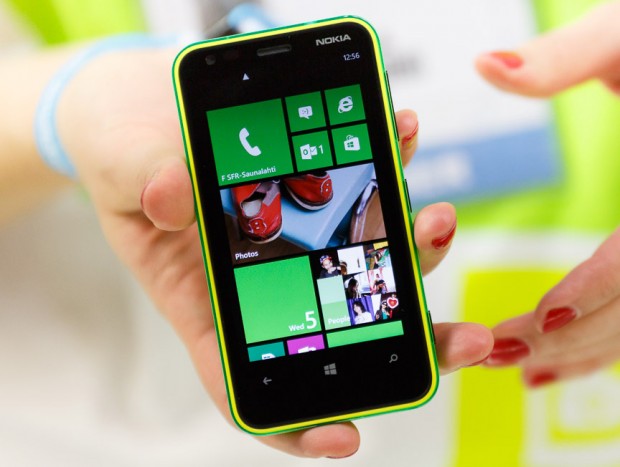
Usually when out of the office, I take product photos with Canon’s 50mm f/1.4 lens, but I didn’t have it with me when Nokia debuted its Lumia 620 smartphone. I shot this with Sigma’s 70-200mm F2.8 EX DG OS HSM, which I’d brought for taking pictures of people, not gadgets, but it worked fine as long as somebody else was there to hold the phone.
Canon EF 17-40mm f/4L and EF 50mm f/1.4 USM
Of my secondary lenses, I use the wide-angle zoom for slides in presentations, event venues, vendor booths, crowds, and product demos. The fast fifty is chiefly for product shots, since it has nice bokeh when I want it and a reasonably close focus distance for mobile phones. And it’s small enough to be portable and to use shooting one-handed so I can hold the latest smartphone or other trinket in my left hand.
15-inch Retina display MacBook Pro with Adobe Lightroom and Apple Aperture
This laptop has competitive performance and battery life, is very well built, has a great screen with good color, and almost never crashes on me. I can run it with the screen turned down to nearly nothing or even entirely off to save battery power, and the backlit keyboard is useful in dark auditoriums. Its SSD is way too small for photography’s storage needs, so I make sure I clear off old catalogs to my secondary storage before hitting the road. I like the portability of the MacBook Airs, but they’re just not powerful enough. For software, I usually use Lightroom, but I find Aperture faster as long as you don’t need to edit much, its tethering support is less flaky, and its white-balance tools work well for me. I can’t always shoot tethered, since it chains me to my seat, but it’s much faster during deadline events. I always shoot raw, though for time-critical events I’ll add JPEG to the mix.
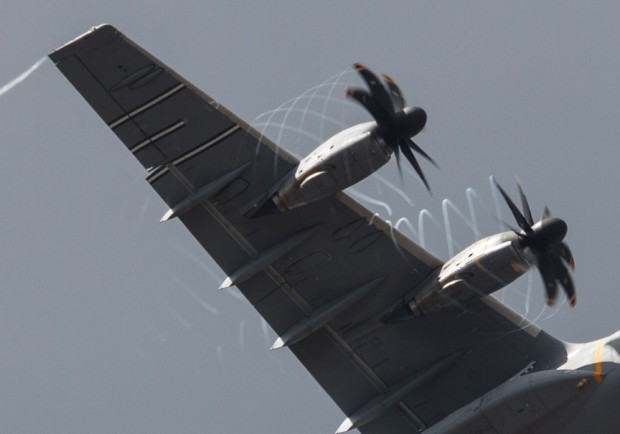
I try to find what I can besides standard photos. This shows corkscrew contrails forming from an an Airbus 400M’s propeller tips at the Farnborough airshow in England.
Tamrack Series 5550 Adventure 10 Backpack
When I travel, I squeeze all my gear and a few days’ clothes into it. It’s served me well, but I’ll be honest: I’m in the market for something more rugged. The laptop zipper is busted, the inside stitching couldn’t handle the pressure, and one of the outside straps is partially detached. Also, when traveling on airlines like Lufthansa that are picky about your carry-on baggage weight, I bring a lightweight nylon bag that scrunches down into nothing. When the staff complains that my pack is over the weight limit, I move the camera and laptop over to the nylon bag. It also helps for warm-weather clothes or other overflow items.
Modahaus Tabletop Studio
When I’m shooting products in the comfort and safety of my own home, I use this tabletop studio. It’s a handy piece of washable plastic whose tabs fit together to make nice even background, and color inserts can spice up the view. Usually product photography is more relaxing than event photography, because there’s time to get things right and the lighting is better than cavernous convention centers. But shooting for CNET can be intense because of the deadlines; earlier this year I had just a few hours to test and photograph a new Google Chromebook laptop, write the review, edit the photos, and publish it all. And a lot of product photography I do is in the middle of product launches where dozens of others are jockeying for scarce examples of some new gadget or prototype.
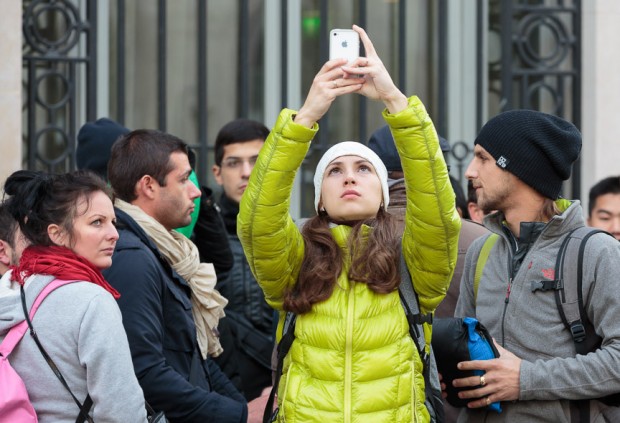
She was just taking a video of people in the Apple iPhone 5, but it looks like an act of worship.
Last, let me share my wish list.
More Light
I should probably bite the bullet and shoot with a flash more often, but the baggage burden and technical complications discourage me. Most often I can get away without one with no trouble. I usually shoot between ISO 800 and 6,400, which the 5D Mark III handles well enough for my purposes. The tech industry has only begun learning what the car industry has long known: kilowatt-sucking arrays of blazing lights dramatically improve product photos. The worst lighting I’ve endured in recent memory was, perversely, Hasselblad’s unveiling of its “Lunar” camera prototype in a very dim room.
A Better Backpack
Why don’t camera bag makers offer a better selection of bags that can hold both camera gear and ordinary baggage? There are terrific high-capacity bags that you can stuff to the gills with lenses, camera bodies, and accessories, but I also need to fit in rain gear, fleece, first-aid kits, maps, guidebooks, and often lunch for a family of three. And I need it to hold up longer than a year.
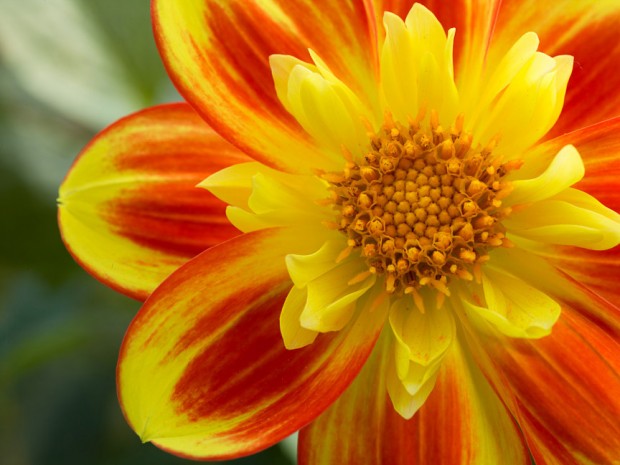
I write about digital photography, too, which means I get to try some nice equipment. The 80-megapixel Phase One IQ180 medium-format camera captures color so well I broke my rule of not taking flower photos.
Networked Cameras
Someday perhaps, cameras will do a better job with wireless networking and GPS, but for now it seems the camera makers are at least five years behind smartphone makers when it comes to embracing the connected-device era. That’s why I find the Samsung Galaxy Camera interesting. In my perfect world, I could use inexpensive wireless tethering, with photos being stored on both my laptop and my phone, and my phone’s location could be easily registered by my camera for automatic geotagging. Sure, my phone doesn’t have enough storage space for all the photos I take, but in my fantasy realm it’ll have cheap enough data plans that my shots will be uploaded automatically to the cloud. We’re not there now, but I have some optimism that the present golden age of camera experimentation will produce something with a lens, image sensor, and awareness of the Internet. I’m impatient, but watching the tech industry’s progress in the last decade, I believe this dream eventually will come at least partly true.

I had the window open for better light while taking macro shots of a Google Chromebook when a ladybug arrived on the scene.
You can keep up with Stephen on CNET, and follow him on Twitter, Google+, and Facebook



Stephen I hear what you’re saying about better backpacks – hopefully the manufacturers are reading this :-)
Fabulous shot of the propeller contrails btw
@NornIronMan:disqus Thanks! It was just humid and cool enough for these helical contrails. Of course that meant it was also overcast and sometimes rainy, but hey, it’s an airshow in England.
Re. backpacks, a commenter pointed me to F-stop Gear, but I’m not sure their packs accommodate laptops, too.
The bigger ones does have a compartment for a laptop. I have a Loka bag and it fits a 15 inch MacBook Pro.
Agree about the backpacks, which is why I’m so excited about TrekPak. I bought the Deuters Alpine pack with the TrekPak insert, but the prospect of converting ANY backpack you want into a camera bag with a system FAR better than velcro means not having to compromise anymore!!!
A colleague also points me toward Kata Bags: http://www.kata-bags.us/photo-by-carrying-type-backpacks?n=0&va=t Looks reasonable but not sure they have enough room.
Check out F-stop backpacks. Sounds like it could be something like that you are looking for.
Fascinating and it’s clear that the auto industry is light years ahead of the supposed “bleeding edge” of the technology industry when it comes to framing products in beautiful light. :)
The ladybug picture has too much dust. Much better now!
http://i.imgur.com/YJyxB.jpg
Thanks for sharing your tips, Stephen! Well done!